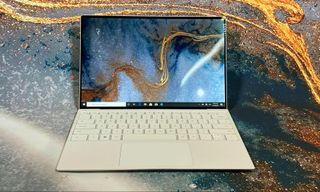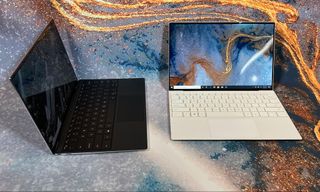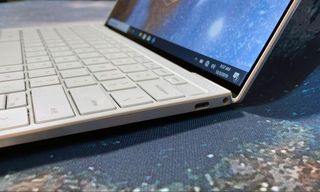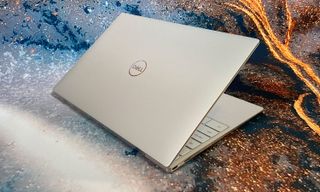Dell’s flagship ultraportable is getting smaller in every possible way, including its already-tiny bezel. Just ahead of CES 2020, the company has unveiled a new design that shrinks the bottom bezel around a larger 16:10 screen for a 91.5% screen-to-body ratio. It’s also adopting Intel’s 10th Genertion Ice Lake CPUs. The laptop will be available on January 7 starting at $999.99.

Specs
| CPU | Up to 10th Gen Intel Core i7-1065G7 |
|---|---|
| Graphics | Up to Intel Iris Plus (integrated) |
| RAM | Up to 32GB LPDDR4x - 3,733 MHz |
| Storage | Up to 2TB PCIe SSD |
| Display | 13.4 inches, 16:10, up to 3840 x 2400 resolution |
| Battery | 52 WHr |
| Ports | 2x Thunderbolt 3, microSD card reader, 3.5mm headphone jack |
| Size | 11.6 x 7.8 x 0.5 inches / 293.6 x 198.1 x 12.7mm |
| Weight | 2.6 pounds / 1.2kg (non-touch) / 2.8 pounds / 1.3kg (touch) |
| Starting Price | $999.99 |
Dell has made this thing significantly smaller at just 11.56 x 7.8 x 0.5 inches.That’s 6% thinner with a 2% thinner footprint. The keyboard now stretches across the device. It uses rubber dome switches with about 1mm of travel rather than the MagLev option, which uses a magenet and butterfly mechanism with each key, in the XPS 13 2-in-1. In our limited hands-on time, the keyboard better as it was much clickier.

Despite the fact that the bottom bezel has shrunk significantly, Dell found room in the top bezel to add an infrared webcam, so owners can finally log in with facial recognition.
The chassis ic machined from CNC aluminum and feels solid. The black option has a carbon fiber palm rest, while the white version uses glass fiber.
In shrinking the XPS 13, Dell has made it far less serviceable. The RAM (up to 32GB) is soldered to the board, and the 52 WHr battery is built into the laptop and, per Dell, not replaceable by the people who buy them. That leaves the PCIe M.2 SSD as the only upgradeable or replaceable part.

While a revision to last year’s XPS 13 used Intel’s 14nm, 10th Gen “Comet Lake” CPUs, Dell has switched to 10nm Ice Lake here. Last year, Dell had said the XPS 13 needed Comet Lake’s better productivity numbers, while the Ice Lake machine offered better graphics performance. It’s unclear why the company switched now.
The $999.99 starting model has an Intel Core i3-1005G1 CPU, 4GB of RAM, 256GB of storage and a 1920 x 1080 non-touch display, so you’ll have to spend over $1,000 to get the specs we’d generally recommend (Core i5, at least 8GB of RAM).

For developers, Dell will also sell a version with Ubuntu called the Dell XPS 13 Developer Edition, which will start at $1,199.99 and go on sale on February 4.
Dell has gone the opposite way from HP’s Spectre x360 update from late 2019, which is thicker but has more ports, including USB Type-A. We’ll see how the new XPS 13 competes when it shows up in our labs.
"hardware" - Google News
January 02, 2020 at 09:00PM
https://ift.tt/2FqajZz
Dell XPS 13 Gets 10th Gen Chips, Loses Bottom Bezel - Tom's Hardware
"hardware" - Google News
https://ift.tt/34VCCtX
Shoes Man Tutorial
Pos News Update
Meme Update
Korean Entertainment News
Japan News Update
No comments:
Post a Comment